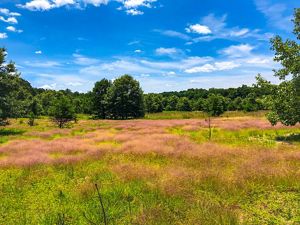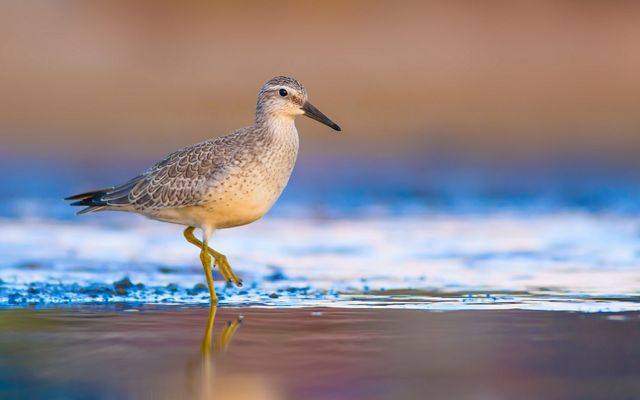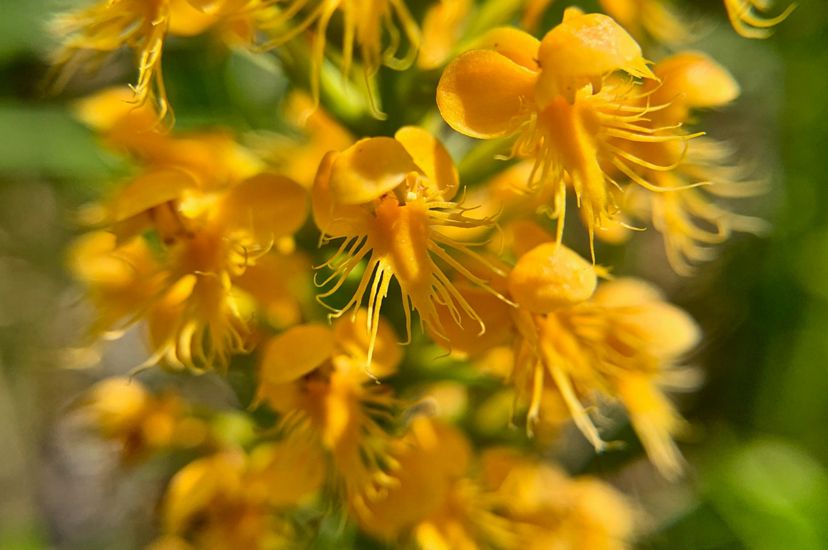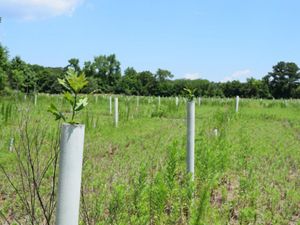
10 Amazing Rare Species Found in Delaware
Thanks to land protection projects and ongoing conservation efforts, Delaware has witnessed the return of several rare and endangered species.
Delaware’s natural ecosystems are home to a rich diversity of rare and native fish, mammals, birds, reptiles, amphibians and plant species. Since 1990, The Nature Conservancy (TNC) has protected over 30,000 acres in the First State and manages more than 5,000 acres in southern Delaware. These protected habitats—including forests, saltwater marshes, freshwater wetlands and open meadows—are increasingly critical for biodiversity and the long-term survival of many species facing pressures from development and climate change.
Stay in Touch
Sign up to receive monthly e-mail conservation news, event info, & updates from Delaware.
Through various science-based land management and stewardship efforts, such as reforestation, invasive species removal and prescribed burning, TNC is working to restore natural habitats and create conditions where previously unseen or rare species can thrive. By protecting and managing these environments, we can bring back species once thought to be lost, contributing to the overall health of our ecosystems.
Below is a list of 10 rare or endangered species discovered at one of TNC's preserves in Kent and Sussex counties.
1. Black Rail
Quote: Dr. Christopher “Kitt” Heckscher

Milford Neck Preserve provides important high-quality habitat for these species, many of which are threatened regionally by sea level rise.
Smaller than a robin with dark plumage befitting its name, the black rail (Laterallus jamaicensis) nests in salt and brackish marshes from the Mid-Atlantic to the Florida coast as well as portions of the southern United States. Distinctive for its gray breast, red eyes and white speckles on its back, the eastern subspecies is classified as federally threatened by the U.S. Fish and Wildlife Service. Delaware lists the species as endangered and it is a Tier 1 priority in the Department of Natural Resources and Environmental Control’s Wildlife Action Plan.
A wildlife survey at TNC’s Milford Neck Preserve led by Dr. Christopher “Kitt” Heckscher, Professor of Environmental Science at Delaware State University, found evidence of a small black rail nesting population. Nighttime audio recorders placed around the preserve captured the elusive bird vocalizing from two different sites on three separate dates.
Other secretive waterbirds recorded during the nesting season included the Clapper Rail, King Rail, Virginia Rail, Common Gallinule, Sora, American Bittern and Pied-billed Grebe.
“The results of this survey show a diverse suite of waterbirds that are likely nesting on the preserve,” says Heckscher. “Milford Neck Preserve provides important high-quality habitat for these species, many of which are threatened regionally by sea level rise.”
2. Appalachian Quillwort
The Appalachian Quillwort (Isoetes appalachiana) is a rather unassuming-looking plant that thrives in wetland habitats and is typically associated with a southern range, close to the Appalachian range.
In 2021, Delaware State Botanist Bill McAvoy made a remarkable find at a TNC preserve. He stumbled upon the Appalachian Quillwort growing in an area where it had never been documented before. Initially, McAvoy was so taken aback by this discovery that he speculated it might be an entirely new species. However, after conducting thorough testing, it was confirmed that the plant was indeed the Appalachian Quillwort. This finding marked a new occurrence for the Delmarva Peninsula, expanding the known range of this species and highlighting the importance of conservation efforts.
3. Red Knot
Red knots are small, brownish shorebirds that fly more than 9,000 miles from south to north every spring and repeat the trip in reverse every autumn, making this bird one of the longest-distance migrants in the animal kingdom—an incredible feat for a species with a wingspan of just 20 inches.
The farthest flung red knot populations spend the winter at the southern tip of South America, in Tierra del Fuego. Come spring, they’re on their way to the Arctic where they breed during the short Arctic summer. The Delaware Bay is the final and most critical rest stop for these migratory birds, where they feed on horseshoe crab eggs in preparation for the final leg of their journey to their Arctic breeding grounds. The undeveloped beaches at our Milford Neck Preserve provide essential stopover habitat for these federally threatened birds.
4. Photuris Cinctipennis & Photuris Mysticalampas
Another remarkable discovery by Dr. Heckscher, Professor of Environmental Science at DSU, involves two globally rare firefly species: Photuris cinctipennis and Photuris mysticalampas. Photuris cinctipennis was found thriving in a dry upland forest, an environment characterized by well-drained soils and diverse plant life. In contrast, Photuris mysticalampas was discovered in a lowland Atlantic White Cedar palustrine forest, a unique wetland ecosystem known for its waterlogged soils and dense cedar stands.
The presence of these rare firefly species significantly enhances the conservation value of Middleford North Preserve. This discovery not only highlights the ecological richness of the preserve but also underscores the importance of protecting such habitats. These findings suggest that the associated habitats are of high ecological quality, which underscores the critical need for ongoing conservation efforts to maintain and protect these valuable ecosystems.
5. Eastern Tiger Salamander
The eastern tiger salamander is the largest salamander found in Delaware. Adults average 7 to 8 inches in length although they can grow up to 13 inches. They are black with yellow-brown blotchy spots, somewhat resembling a tiger. It has a blunt, rounded snout that it uses to burrow underground where it eats spiders, insects and worms. They are considered endangered in Delaware.
Eastern tiger salamanders spend most of their lives underground, migrating to their breeding ponds in late winter or early spring, where females will lay eggs attached to twigs or rooted vegetation in ponds. After hatching, the larvae transform into juveniles in about 75-115 days. From the ponds, the juveniles will head to underground burrows and tunnels, where they will spend most of their lives.
Delaware’s populations of eastern tiger salamanders have been declining due to habitat loss and fragmentation as well as pollution of their breeding ponds. “Pemberton Forest Preserve is one of only two protected areas in Sussex County with known breeding populations,” says Natasha Whetzel, TNC Delaware Stewardship Program Manager.
Help Us Save More Endangered Species
With your help, we can continue to protect habitat for endangered species across Delaware.
Donate Today6. Crested Yellow Orchid
In the summer of 2022, Natasha Whetzel, TNC Delaware Stewardship Program Manager, spotted a unique species. While conducting routine monitoring at one of TNC's preserves, Whetzel spotted a crested yellow orchid (Platanthera cristata), for the very first time. This beautiful and delicate species is considered rare and of significant conservation concern in Delaware, making this sighting particularly noteworthy.
The reappearance of the crested yellow orchid is likely a direct result of TNC's strategic forest management efforts. Over the past few years, TNC has implemented a series of measures aimed at restoring the natural balance of the forest ecosystem, like utilizing prescribed fire to thin out invasives and the thinning of a dense loblolly pine canopy. This process allowed more sunlight to penetrate through to the forest floor, creating a more favorable environment for a variety of plant species, including the crested yellow orchid. The presence of such a rare species is a testament to the resilience of nature and the positive impact that thoughtful, science-based stewardship can have on biodiversity.
7. Delmarva Fox Squirrel
The Delmarva Fox Squirrel, known for its distinctively fluffy tail and light-colored belly, was added to the federal Endangered Species List in 1967. Thanks to dedicated conservation efforts, including restoration projects at Pemberton Forest Preserve, this species was successfully delisted in 2015 and brought back from the brink of extinction.
Now, a population of Delmarva Fox Squirrel is known to inhabit Pemberton Forest Preserve. Delaware’s Division of Fish and Wildlife periodically visits Pemberton Forest Preserve to survey the Delmarva Fox Squirrel population as they traverse the Redden Forest corridor, ensuring their continued protection and monitoring.
8. Swamp Pink
Federally endangered since 1988, Swamp Pink (Helonias bullata) is a rare plant with bright pink flowers that thrives in shady, forested wetland areas. This striking flower grows on a one- to two-foot-tall stalk and blooms in the spring.
According to the U.S. Fish & Wildlife Service, while adult plants can survive in suboptimal conditions for several years, the long-term survival of Swamp Pink populations relies on the availability of high-quality, undisturbed habitat. This essential habitat is provided at The Nature Conservancy’s Delaware Preserves, ensuring the continued existence of this beautiful species.
9. Hessel’s Hairstreak
Quote: Natasha Whetzel

The confirmed sighting of the Hessel’s Hairstreak is such a wonderful surprise and a reminder of why conserving open space is so important.
Though listed as an endangered species in the State of Delaware, in the spring of 2022, Dr. Heckscher spotted a Hessel’s Hairstreak butterfly (Mitoura hesseli aka Callophrys hesseli) on a TNC property in southern Delaware for the first time in nearly three decades. This tiny green, black, and white butterfly has a wingspan of only one inch and spends most of its time near the tops of its host plant, Atlantic White Cedar trees, which, thanks to conservation efforts, are found in abundance at Middleford North Preserve.
“I consider it one of the region’s most important Lepidoptera conservation targets. It would be the only known population between New Jersey and southeastern Virginia,” said Dr. Heckscher. “I was lucky enough to be among the group that spotted this butterfly 27 years ago. It’s a long time between sightings but encouraging to see it again.”
“TNC works hard to manage our Delaware properties, so they are welcoming homes for native insects, plants and animals,” says Whetzel. “The confirmed sighting of the Hessel’s Hairstreak is such a wonderful surprise and a reminder why conserving open space is so important.”
10. Southern Rein Orchid
The Southern rein orchid (Platanthera flava) is a modest-sized orchid with pale green flowers. It is often found growing in sunny conditions after a natural disturbance in moist meadows, swamps, marshes, and forest floodplains. State Botanist, Bill McAvoy, spotted the species growing at a TNC preserve in southern Delaware several years ago.
“The Platanthera flava we found is the only extant occurrence in Delaware and only one of two known occurrences on the Delmarva peninsula,” he says.
The discovery of the Southern rein orchid in Delaware is a testament to the success of conservation initiatives, highlighting the importance of continued support and action in preserving our natural heritage.
Creating Critical Habitat
TNC's land protection and science-based land management and stewardship efforts are creating resilient habitats for endangered and threatened species in Delaware.





Milford Neck Preserve : Milford Neck Preserve provides nearly nine miles of undeveloped beachfront that hosts thousands of species annually. © The Nature Conservancy

Middleford North Preserve: Middleford North Preserve is home to an undisturbed stretch of the Nanticoke River and provides important spawning and nursery grounds for several species. © The Nature Conservancy

Ponders Tract : Ponders Tract provides 908 acres of connected and resilient habitat for species in Delaware. © The Nature Conservancy

Pemberton Forest Preserve : Pemberton Forest Preserve provides 456-acre of protected habitat for species in Delaware. © The Nature Conservancy
The discovery of these 10 rare and endangered species at TNC preserves in southern Delaware is proof that science-based land management and stewardship efforts are helping habitats stay resilient in the face of a changing climate. Together, we are creating a healthier and more resilient Delaware for both people and nature.
Help Us Protect Endangered Species
With your help, we can continue to protect habitat for endangered species across Delaware.
Donate Today




















